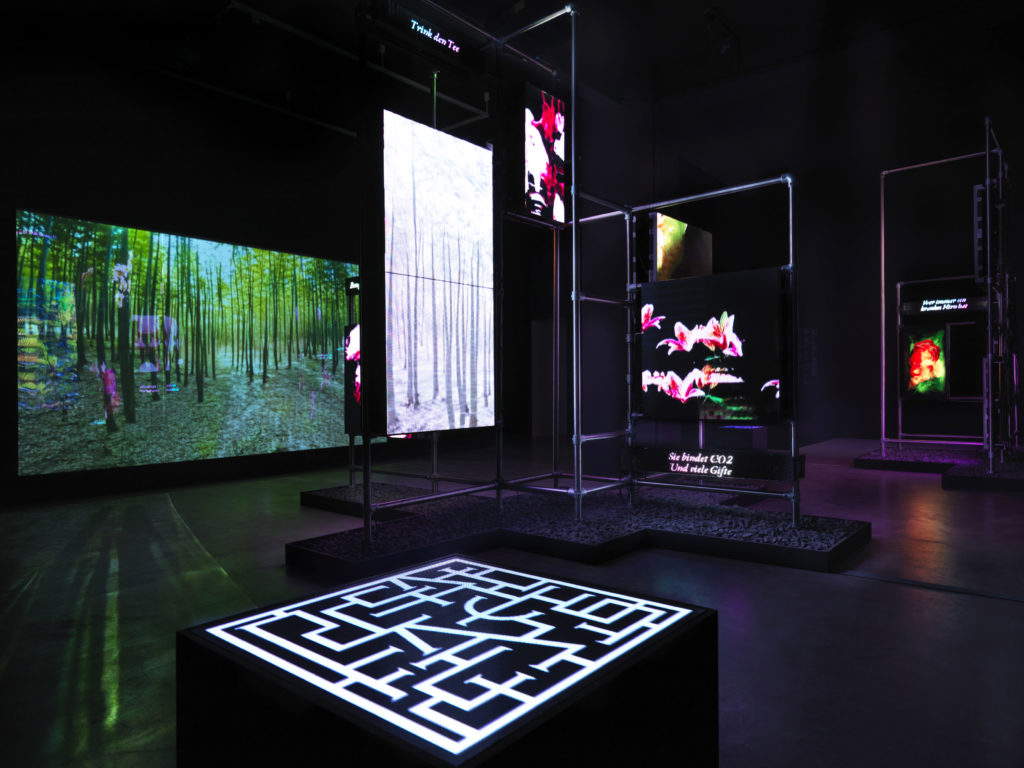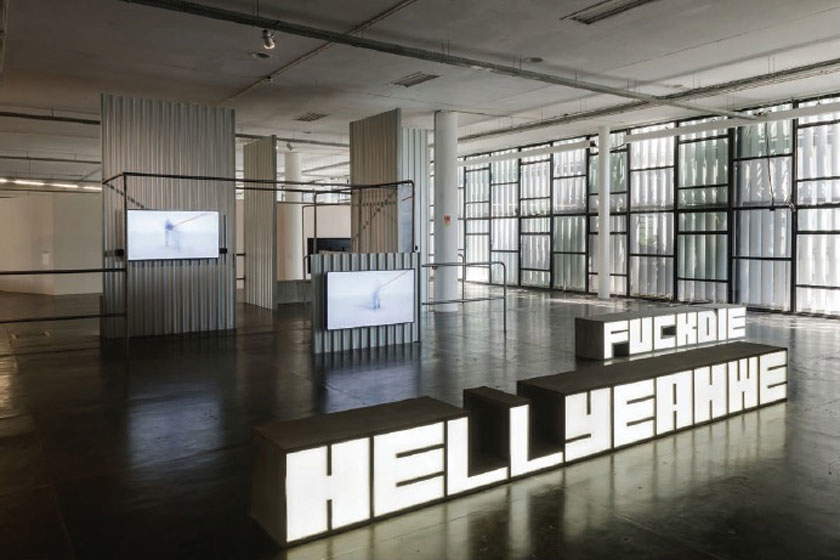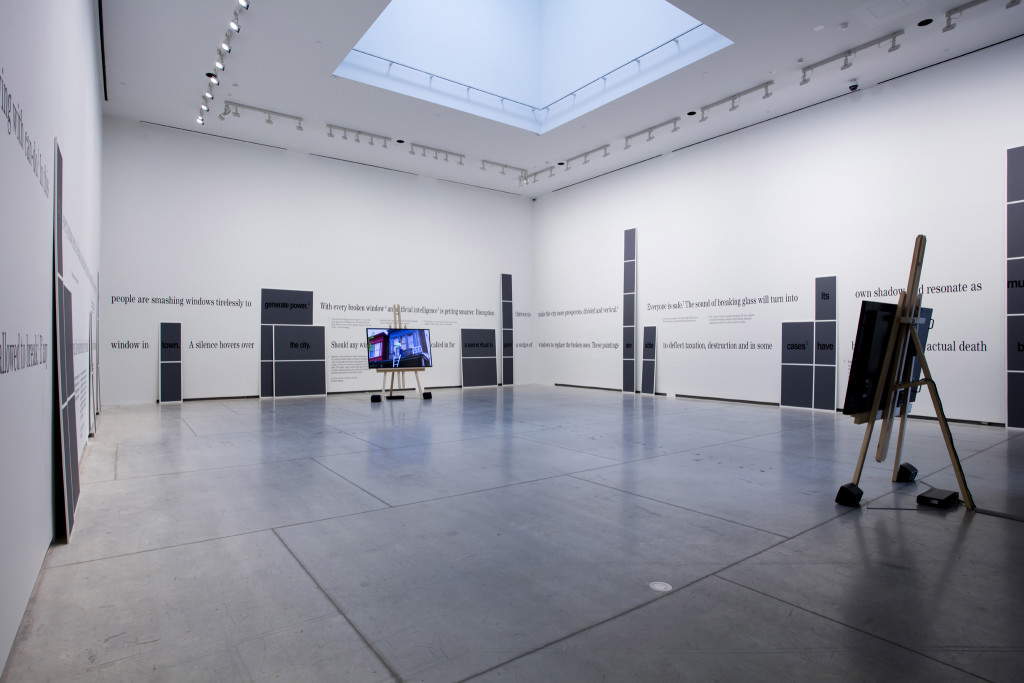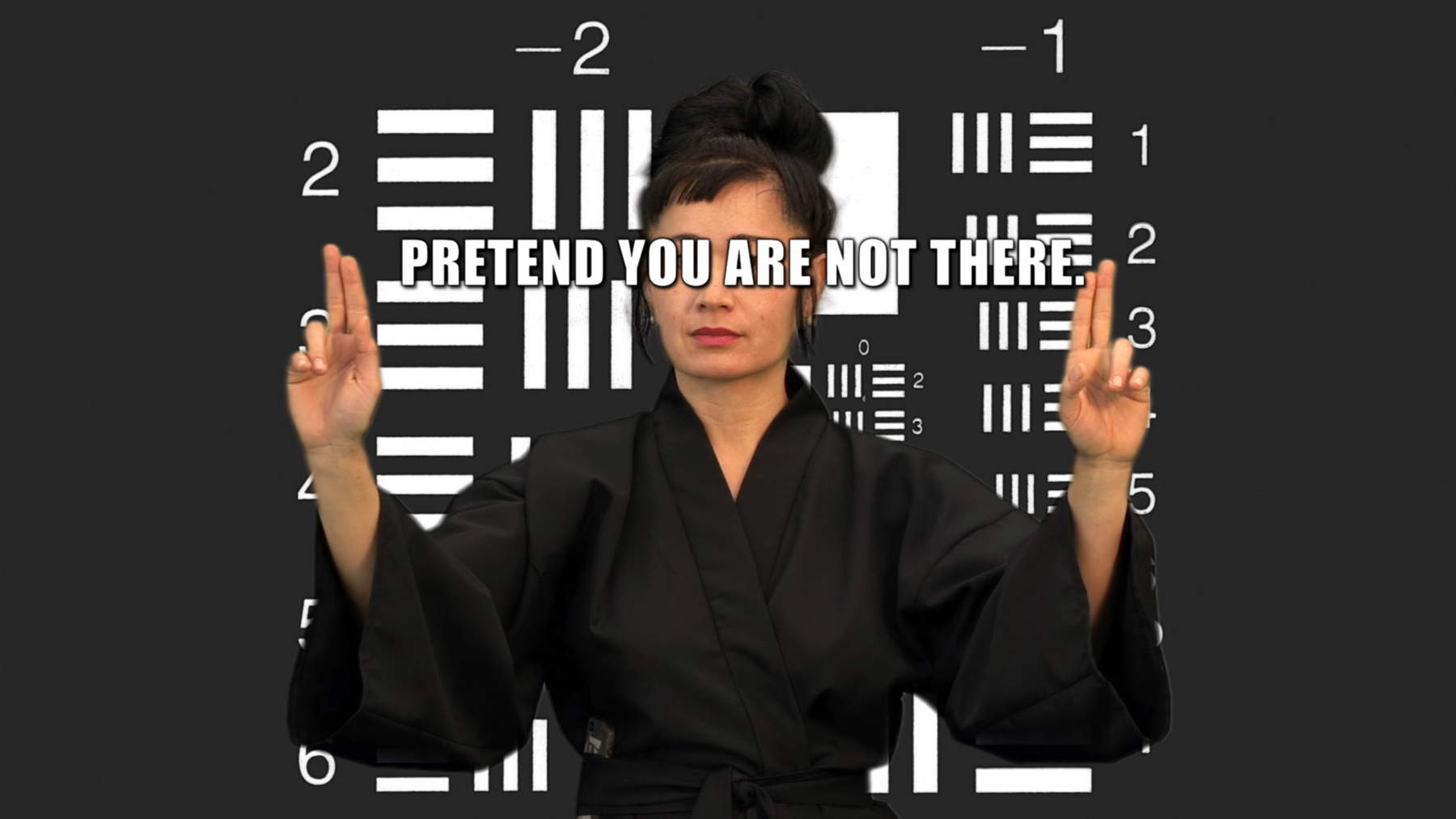The work of Hito Steyerl (Munich, 1966) is an effective compendium of reflections and representations of one of the most discussed macro topics nowadays: the virtual universe, all that is influenced by it and all that it is linked to. What is our relationship with technology, what impact does it have on our lives, what connections does it have with political power, with the economy, with art, with the museum institution. Totally open questions, investigated in a particularly significant way by Steyerl who, not surprisingly, has been permanently included since 2013 in ArtReview’s annual ranking of the 100 most influential people in the contemporary art world. From 2017, when she was placed on the top step of the podium, to the present, the artist consistently appears among the top 20 figures.
The contribution that her work makes to contemporary reflection and debate on these issues is all the more interesting since the forms taken by her investigation vary from time to time, giving greater completeness to her discourse. This plurality of approaches is mainly due to Steyerl’s training, which took place between Germany, Japan and Austria. From his studies in directing to his Ph.D. in philosophy, the artist draws, in continuity with the philosophical thought of the Frankfurt School, the idea of artistic research understood as a critical and political activity towards the paradoxical aspects of our time. To fully respond to this mission, her practice transcends the boundaries of only the visual arts and the mediums she holds dear (photography, video, immersive installations) and also goes in the direction of critical essays, moments of in-depth study and in university teaching of the discipline New Media Art at the University of Arts Berlin. Also at the university, Steyerl is among the founders of the Research Center for Proxy Politics, which between 2014 and 2017 set out to explore the nature of media networks and their actors, from humans to artificial intelligences, and the political and economic implications of digital networks.



The artist has already achieved major international stages, participating in the 3rd Berlin Biennale (2004), Manifesta V (2004), Documenta XII (2007), the Shanghai Biennale (2008) and taking part in the German Pavilion at the Venice Biennale (2015). There he had presented Factory of the Sun (2015), a video installation and at the same time an immersive space, directly inspired by the sci-fi universe of Tron, a cult film from the 1980s that first explored the themes of virtual reality. The work’s inspirational motifs are to be found directly, in Steyerl’s own words, in a passage from philosopher Donna Haraway’s A Cyborg Manifesto (1985): “our best machines are made of sunlight, they are light and precise because they are nothing more than signals, electromagnetic waves, sections of a spectrum.” Beginning with this passage, the work, which is the result of a montage of different kinds of materials (clips of dance footage, surveillance videos, video games, news reports), tells the surreal story of a group of workers forced to move and dance in a motion-capture studio to produce artificial sunlight. This interaction between the analog and virtual worlds is also the focus of the first major international retrospective, Hito Steyerl. I Will Surive. Physical and virtual spaces, dedicated to the artist between 2020 and 2021 in Germany and France. Already from the title of the exhibition it is possible to grasp some of the internal characteristics of the artist’s thinking: the constant reference to the repertoire of images, films and songs (in this case, the well-known and eponymous lyrics sung by Gloria Gaynor) that have marked the collective imagination; a gaze always focused on current events (the desire to survive the current pandemic, for example, but the desire to assign new meanings and functions for art and museums in emergency situations) from a perspective of resistance and resilience. The exhibition’s subtitle, “Physical and Virtual Spaces,” then gives the frame of reference for Steyerl’s entire work, aimed at highlighting the interconnections between the two spaces, now an integral part of reality and indiscriminately inhabited by people around the world.
The pivotal work in the exhibition, staged between the Kunstsammlung Nordrhein-Westfalen in Düsseldorf and the Centre Pompidou in Paris, is probably SocialSim (2020). The title of the work, accompanied by two virtual reality apps, alludes to the social simulator, or that tool employed by the social sciences to anticipate and study the behavior and changes in complex societies from the use of certain technologies and computational models, already employed by Steyerl in a fascinating installation entitled This is the Future (2019). The video focuses on the exponential growth of the obsessive presence of digital media in our lives, the relationship with social networks but also the role of museums in the near future. There are explicit allusions to the global pandemic, no-mask demonstrations and conspiracy theories, and violence perpetrated by police in certain cases, providing data and statistics. Also in Hell yeah we fuck die (2016), the artist makes use of algorithms to find the words that have been found to be most frequently used in English-language song titles over the past decade. These words (hell, yeah, we, fuck, die), which demonstrate a widespread and generalized anxiety in society, compose, like luminous monoliths Steyerl’s installation. The work is also accompanied by some synchronized videos, retrieved from online sources, showing human-robot interactions. The focus is on the quality and endurance tests conducted on the robots. This aspect is also referenced in The City of Broken Windows (2018), a double video installation that shows on the one hand the process necessary for the formation of artificial intelligences, and on the other hand the urban regeneration that starts from collective initiatives. On the first screen, some sound engineers repeatedly shatter glass in order to educate the artificial intelligences (AIs) that will be employed for surveillance to that noise. On the second, some citizens creatively intervene to restore derelict premises by replacing damaged windows with painted wooden boards. A comparison, then, between human, constructive, civic-minded action and the destructive action necessary for the education of automated robots dedicated to surveillance.



Precisely against the forms of control to which we are subjected, consciously or unconsciously, through technology, Steyerl responds, with the irony that often permeates his work, with How Not to Be Seen: A Fucking Didactic Educational .MOV File (2013), whose props become sculpture in Deresolution Tools (2014). The artist bastes, also borrowing languages prevalent on social media, a five-part video lesson to share with his potential students techniques for escaping surveillance cameras. Behind the parody atmosphere, the artist denounces the problem of privacy in an age dominated by images and, in other works, contrasts this impossibility of evading control with the paradoxical disappearance of visual and other content. Zero probab ility (2012), stylistically similar to the tutorial just mentioned, shows how much the condition of “zero probability,” that is, that of becoming invisible and disappearing in an overexposed world, is in fact very present in our time and is, in some cases, due to the simple yet obtuse action of an algorithm.
In the brief overview of the work of Steyerl, described as “one of the most forward-thinking authors and intellectuals” by Carolyn Christov-Bakargiev, director of the Castello di Rivoli, which presented The City of Broken Windows in 2018 , her nonfiction production has not yet been mentioned. However, it is worth dwelling at least on a few titles that, as Christov-Bakargiev again reported, have helped to offer “a skeptical counter-narrative to the enthusiastic progress-oriented communication typical of the digital age” (Carolyn Christov-Bakargiev, They Forget the Violence of Their Gestures. Windows, Screens and Pictorial Acts in an Unquiet Time, 2018). Two of the exemplary texts are In defense of the poor image (2009) and Duty free art (2017). In the former the artist defends the democratic, subversive and creative potential of images generated by general users of cameras, cell phones and computers. In the second, he hymns for art to be a free and autonomous insurrectional practice and not a bargaining chip in the age of planerary civil war in the service of a narrow oligarchy. Nor are the social role of art, museum institutions, and the artist himself excluded from this complex and articulate reflection. In this case Steyerl is not only a careful observer of the present but, through her activity, a powerful voice within the art world capable of highlighting problematic issues, different perspectives and ways out for the survival of life on Earth, beyond digital reality.
Warning: the translation into English of the original Italian article was created using automatic tools. We undertake to review all articles, but we do not guarantee the total absence of inaccuracies in the translation due to the program. You can find the original by clicking on the ITA button. If you find any mistake,please contact us.